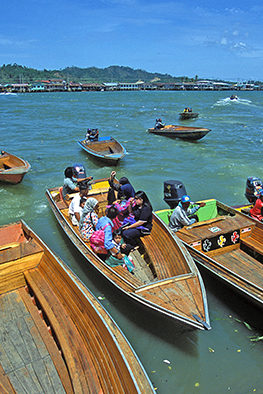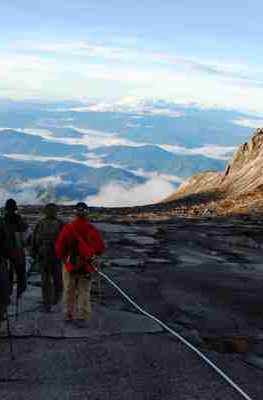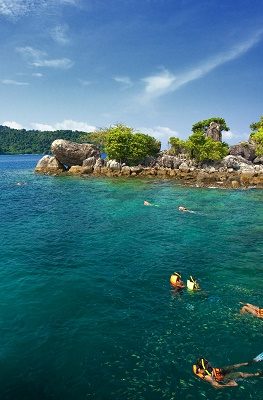Published on January 11, 2016
Before Muay Thai even existed, a centuries-old martial arts form known as MuayChaiya was practised by Siamese warriors. Today, it is making a comeback in the modern age.
Fight fans the world over have fallen in love with Muay Thai, Thailand’s flagship martial art and the country’s national sport. Admired for its speed, aggression and effectiveness, Muay Thai gyms have sprang up everywhere from Italy to Ireland and from Argentina to Australia. Muay Thai superstars like Buakaw and Saenchai, meanwhile, have become household names in countries far from their homeland. However, there is another largely unknown fight form native to Thailand, which also evolved from the days of the old Siamese empire: MuayChaiya.
Both Muay Thai and MuayChaiya owe their origins to MuayBoran, a group of martial arts practised by soldiers of the Siamese army, which were initially designed for use on the battlefield during the old Thai capital, Ayutthaya, period. Each of Thailand’s main regions each had their own style of Muay which developed from MuayBoran. Fighters from the North had “MuayChoeng”, “MuayKorat” was practised in the North-east while the style of “MuayChaiya” was practised in the South.
Exhibition matches between fighters became popular at festivals and religious events while the best fighters from each region were frequently summoned to the capital to compete before the Royal Court. MuayKorat was famed for its use of forceful punches while fighters from LopBuri were feared for their use of smart moves and clever tactics. MuayChaiya, which got its name from the town of Chaiya in the province of SuratThani, became famous for a signature move which translates into English as ‘tiger pulled by the tail’ when fighter Chamnongthong used it to earn a key victory during a bout at the Royal Court.
These competitive fights showcased the unique aspects of each regional style, but they also began the drift towards the single codified ring sport we know today as Muay Thai. But while Muay Thai was adopting roped rings, gloves and other trappings borrowed from Western boxing, practitioners of MuayChaiya were holding closer to the fight form’s battlefield origins. The core goal of MuayChaiya remains that of dispatching one’s opponent as quickly as possible, thereby reducing the chances of sustaining injury. Unlike modern Muay Thai, MuayChaiya is strictly ‘no holds barred’. Often described as being ‘sneaky and nasty’, the eyes, throat, groin and joints are all fair game for attack.
However, MuayChaiya bares some similarities to modern Muay Thai. Like its more well known cousin, MuayChaiya relies heavily on knees, elbows and kicks with the shins. But unlike Muay Thai, MuayChaiya puts a huge emphasis on defence. Fighters utilise their elbows and forearms to defend against punches and other attacks to the head. The result is a style of fighting that not only proved effective on ancient battlefields, but which also works extremely well today as a practical and effective form of defending oneself.
However, Nathamon, who now trains under instructor PhuwasakBangsansanee (also known as KhruMut), quickly fell in love with MuayChaiya once she discovered it. Today, she is committed to helping bring the largely unknown fight form back from the edge of extinction: “I want to learn everything there is to know about [MuayChaiya] so that I can preserve this national treasure.”
While gloves, pads, bags and other custom training equipment are used in MuayChaiya schools today, in years past, fighters honed their skills with what they found around them. Before punch bags, banana trees and wooden posts wrapped with rope or cloth were used for practising kicks and conditioning the lower limbs for impact. Limes dangling from strings were used to practice head movement and rope was used to protect the fists.
Temples acted as centres of learning for much of Thailand’s history with monks taking on the responsibility of teaching literacy, art and history as well as religion. As with many other Asian martial arts; such as, Kung Fu in China, monks at times also found themselves acting as the custodians and teachers of MuayChaiya.
Students progressed slowly, and would often spend years mastering just the footwork that forms the foundation of MuayChaiya before being taught any strikes. However, when their teachers felt they were ready, they would undergo an unusual – and extremely demanding – initiation test. Before joining the ranks of elite MuayChaiya fighters, would-be fighters first had to prove their skill by passing the ‘nangkrok test’. This involved a student sitting on a large mortar with his face covered in white powder. Next, he would be attacked by up to three opponents in succession. Afterwards, the attackers would have their fists examined for traces of powder from the student’s face. If any was found the student was deemed to have failed. Only when he had fended off the attacks without sustaining a single blow to his face would he then be admitted to the ranks of the elite MuayChaiya fighters and be deemed ready for battle.
MuayChaiya features many other ritualistic practices. Each practitioner would perform a ‘waikhru’ ceremony before each bout which involved checking the sun’s location to make sure it is at his back in the belief that it would bring him victory. Next, fighters would taunt their opponent by writing his name on the ground before trampling on it. With the ceremony complete, both practitioners would be in no doubt that there was now no room for talk or negotiation – and that their fight was unavoidable.
Although some of the rituals involved in MuayChaiya are no longer practised, some of its more ancient elements are still alive today. MuayChaiya practitioners still wear traditional clothing and protective equipment. A loin cloth is tied around the waist and positioned over the groin area by each boxer. This ‘krajap’ is then stuffed with other materials in order to fully protect the fighter from kicks, knees and other blows. Fighters also bind their fists with special yarn, wear a head band known as a ‘prajiadhua’ and armbands called ‘prajiadkaen’. “One of the charms of MuayChaiya is its costumes,” adds Nathamon.
While it has much to offer both as a form of self-defence and as a part of Thailand’s cultural and combat history, sadly, MuayChaiya is facing an uncertain future. It remains largely unknown even among Thailand’s fighting fraternity. “I’m worried that MuayChaiya will soon disappear,” admits long-time practitioner PrasertYalah. Prasert, who has spent decades touring the provinces and performing at events in a bid to help preserve the art continues, “We have a responsibility to the Thai people to save it. I don’t want MuayChaiya to die.”






